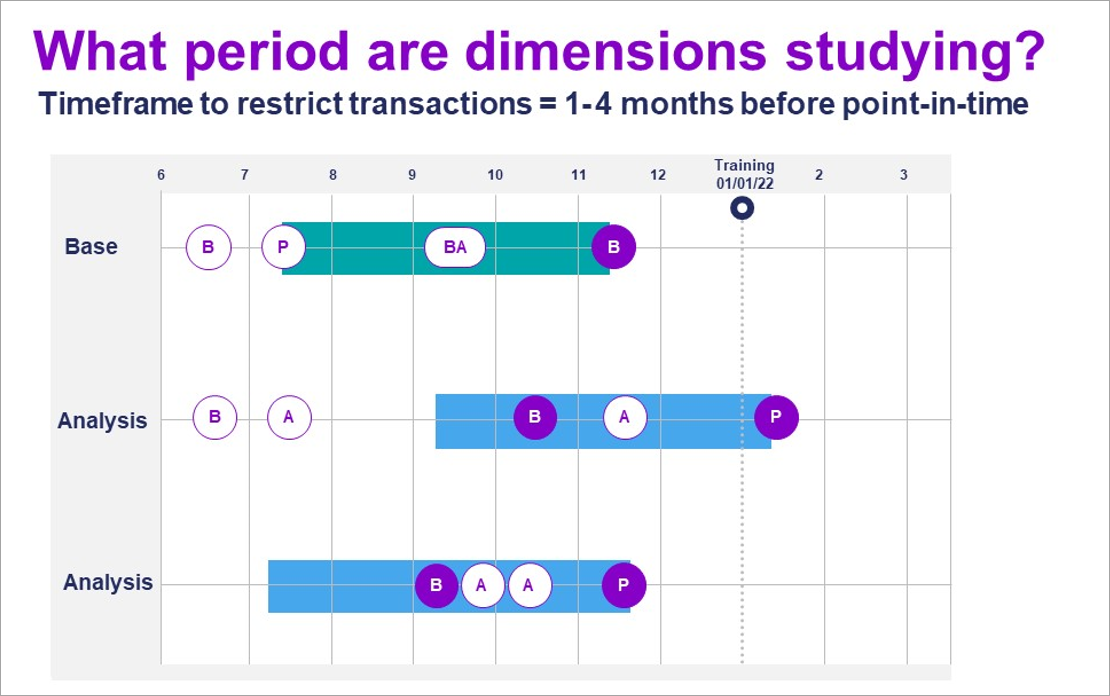Behavioural modelling - setting the time frame for studying dimensions (behavioural features)
Each dimension you create is associated with a time period which represents the window during which behaviours are monitored. In the selection builder, you specify the Point-in-Time from which this window starts - highlighted in green below.

For the analysis selection, it is logical to have the point-in-time centred around the behaviour of the analysis group. In the scenario used here, behaviours are examined in relation to particular insurance cover being taken out - i.e. a person made a booking and then purchased a type of insurance policy. Our focus is on the characteristics of people who bought insurance and, therefore, the aim is to study their behaviour prior to the insurance policy purchase date.
For the people in the base group who did not take out insurance cover, their point in time is set as 'bookings' and the study of their behaviours centres around the booking. In the diagram below, the top row represents someone in the base group. A booking is identified prior to the training date but there is no subsequent policy purchased. We cannot, therefore, study the behaviours leading up to a policy purchase and, instead, the behaviours leading up to the booking are examined.

For related topics see Behavioural modelling - creating dimensions (behavioural features)